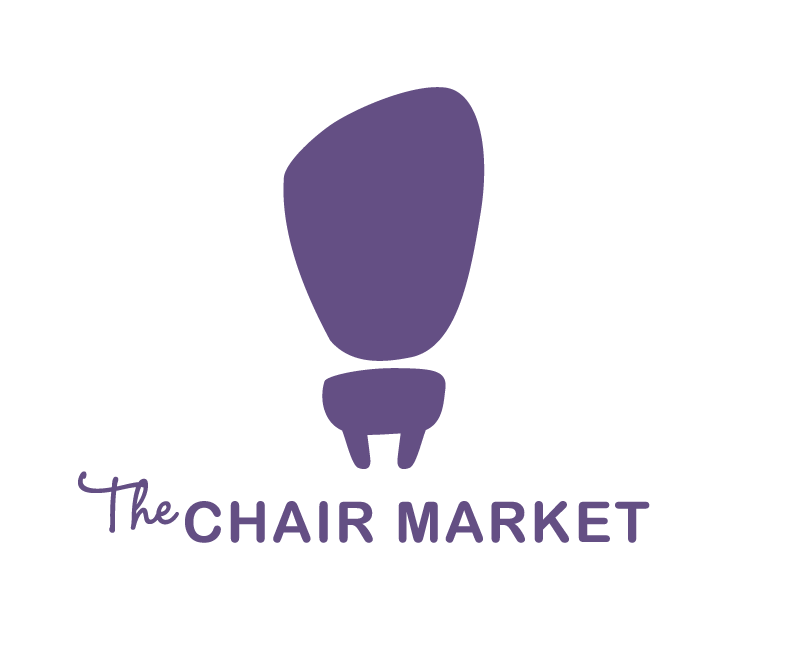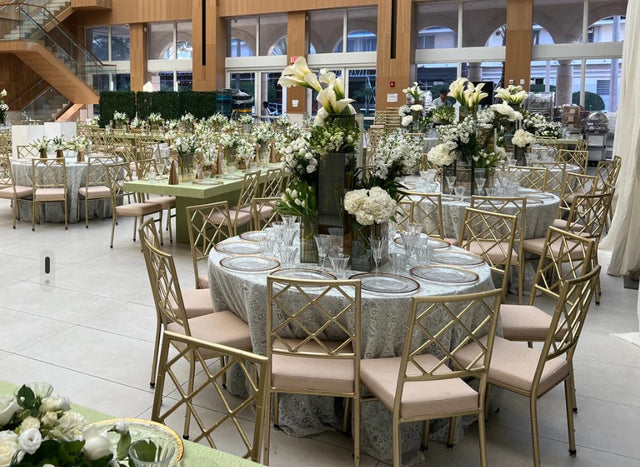A Comprehensive Guide to Metal Restaurant Furniture
Metal furniture is a popular choice for restaurants due to its durability, aesthetic appeal, and versatility. In this comprehensive guide, we will explore the various aspects of metal restaurant furniture, from its importance in restaurant settings to selecting the right pieces for your establishment, maintenance and care tips, environmental impact, and future trends in design.
Understanding the Importance of Metal Furniture in Restaurants
The Durability of Metal Furniture
Metal furniture is known for its exceptional durability, making it ideal for high-traffic areas such as restaurants. Unlike wooden furniture that can easily scratch or stain, metal furniture is resistant to such damage. It can withstand heavy use and is less prone to breakage, ensuring longevity in your restaurant.
Furthermore, metal furniture is often treated with special coatings to enhance its durability even further. These coatings can protect the furniture from rust, corrosion, and fading, ensuring that your investment in metal furniture lasts for years to come. This added layer of protection makes metal furniture a practical and cost-effective choice for restaurant owners looking for long-lasting and low-maintenance seating options.
The Aesthetic Appeal of Metal Furniture
In addition to its durability, metal furniture adds a touch of modern elegance to restaurant interiors. The clean lines and sleek design of metal chairs and tables create a contemporary atmosphere, enhancing the overall look and feel of the space. Whether your restaurant has a rustic or minimalist theme, metal furniture can complement any style.
Moreover, metal furniture comes in a variety of finishes, including brushed steel, polished chrome, and powder-coated colors, allowing restaurant owners to customize the look of their space. This versatility in design options ensures that metal furniture can seamlessly blend in with any decor scheme, from industrial chic to upscale fine dining. The ability to tailor the aesthetics of metal furniture to match the ambiance of a restaurant makes it a versatile and attractive choice for interior designers and restaurateurs alike.
Different Types of Metal Used in Restaurant Furniture
Stainless Steel Furniture
Stainless steel furniture is a popular choice for its remarkable durability and resistance to corrosion. It is easy to clean and maintain, making it suitable for busy restaurant environments. Stainless steel furniture is available in various finishes, allowing you to achieve the desired look for your restaurant.
One of the key advantages of stainless steel furniture is its ability to withstand high temperatures, making it ideal for commercial kitchens where heat resistance is essential. Its non-porous surface also makes it hygienic and easy to sanitize, meeting the stringent cleanliness standards of the food industry. Additionally, stainless steel furniture is known for its eco-friendly properties as it is fully recyclable, reducing its environmental impact.
Wrought Iron Furniture
Wrought iron furniture brings a touch of elegance and sophistication to restaurant spaces. With its intricate designs and sturdy construction, wrought iron furniture adds a timeless charm to any establishment. However, it may require occasional maintenance to prevent rust and maintain its appearance.
Historically, wrought iron furniture has been a symbol of wealth and luxury, often found in upscale dining establishments and fine dining restaurants. Its malleability allows for intricate detailing and ornate patterns, creating a sense of opulence in the dining area. While wrought iron furniture exudes a classic and romantic ambiance, it is important to protect it from harsh weather conditions if used outdoors to prolong its lifespan.
Aluminum Furniture
Aluminum furniture is lightweight, making it easy to move and rearrange as needed. It is also resistant to rust and corrosion, making it suitable for outdoor seating areas. Aluminum furniture is available in a variety of styles and finishes, allowing you to choose the perfect pieces to match your restaurant's ambiance.
Due to its lightweight nature, aluminum furniture is a popular choice for establishments that frequently host events or require flexible seating arrangements. Its versatility extends to both indoor and outdoor settings, providing a cohesive look throughout the restaurant. Additionally, aluminum furniture is known for its longevity and low maintenance requirements, making it a cost-effective option for restaurant owners looking for durable and stylish seating solutions.
Selecting the Right Metal Furniture for Your Restaurant
Considering the Restaurant's Theme
When selecting metal furniture for your restaurant, it is essential to consider the overall theme and atmosphere you want to create. Whether you aim for a classic, industrial, or contemporary look, choose pieces that blend seamlessly with your desired style. Pay attention to color schemes, finishes, and design elements that complement your restaurant's theme.
For a classic theme, opt for metal furniture with intricate details and elegant finishes like brass or bronze. Industrial-themed restaurants can benefit from rugged metal pieces with raw finishes for a rustic charm. In contrast, contemporary restaurants may lean towards sleek, minimalist metal furniture with clean lines and bold colors to create a modern aesthetic.
Balancing Comfort and Style
While aesthetics are important, comfort should not be overlooked when choosing metal restaurant furniture. Ensure that chairs are ergonomically designed, providing adequate support for guests. Consider upholstered seats or cushions for added comfort without compromising style.
Additionally, pay attention to the height of the chairs and tables to ensure a comfortable dining experience. Adjustable features like swivel seats or adjustable table heights can cater to a diverse range of customers, enhancing their comfort and overall satisfaction.
Evaluating the Space and Layout
Before purchasing metal furniture, carefully assess your restaurant's space and layout. Take accurate measurements to ensure that the furniture fits comfortably without overcrowding the area. Consider the traffic flow and space needed for guests and staff to move around freely.
Strategically place furniture to create designated dining areas while maintaining an open and inviting ambiance. Consider versatile pieces like stackable chairs or folding tables for flexibility in rearranging the layout based on reservations or events. By optimizing space utilization, you can enhance the overall dining experience for your patrons.
Maintenance and Care for Metal Restaurant Furniture
When it comes to metal restaurant furniture, proper maintenance and care are crucial for both appearance and longevity. Regular cleaning is a fundamental aspect of this upkeep. Using a mild soap and water solution is effective in removing dirt and stains without causing damage. It's important to steer clear of abrasive cleaners or tools that could potentially scratch or mar the surface of the furniture. After cleaning, be sure to wipe the furniture dry to prevent any water spots from forming.
Aside from regular cleaning, addressing rust and wear promptly is essential to prevent further deterioration. If rust is spotted on your metal furniture, swift action is necessary. Utilize a rust remover or a mixture of vinegar and water to eliminate the rust. Following this, applying a protective coating like wax or clear sealant can help in preventing future rust formation. In cases of wear and scratches, using appropriate paint or touch-up kits to touch up affected areas can maintain the furniture's appearance.
Long-Term Preservation Strategies
For long-term preservation of metal furniture, implementing strategic measures can significantly prolong its lifespan. Regularly applying a protective layer of wax or sealant can help maintain the furniture's finish and guard against corrosion. During periods of non-use, storing the furniture in a dry, covered area is advisable to shield it from harsh weather conditions and environmental elements.
The Environmental Impact of Metal Furniture
When considering the environmental impact of metal furniture, it's important to delve deeper into the production process. Metal furniture is often manufactured using a combination of different metals, each with its own extraction and processing methods. For example, steel production involves mining iron ore and coal, which can have significant environmental consequences such as deforestation, habitat destruction, and greenhouse gas emissions. Understanding the full lifecycle of metal furniture can help consumers make more informed choices about their purchases.
Sustainability of Metal Furniture
Metal furniture is highly sustainable due to its recyclability and durability. Unlike wood furniture, which often requires the harvesting of trees, metal furniture can be made from recycled materials. Additionally, metal furniture has a longer lifespan, reducing the need for frequent replacements and ultimately minimizing waste.
Recycling and Disposal of Old Furniture
When it comes to disposing of metal furniture, recycling is an excellent option. Many recycling facilities accept metal furniture for repurposing. If the furniture is still in good condition, consider donating it to a local charity or selling it to someone who can make use of it. By choosing responsible disposal methods, you can minimize your environmental impact.
Furthermore, the design of metal furniture can also play a role in its environmental impact. Opting for minimalist and timeless designs can ensure that the furniture remains relevant and in use for longer periods, reducing the overall demand for new furniture production. Additionally, choosing locally sourced and manufactured metal furniture can help lower carbon emissions associated with transportation.
Future Trends in Metal Restaurant Furniture
Innovative Designs on the Horizon
Metal restaurant furniture continues to evolve with new and innovative designs emerging in the industry. Designers are incorporating unique features, such as multi-functional pieces and customizable options, to meet the diverse needs of modern restaurants. Keep an eye out for exciting trends that blend form and function in metal furniture.
The Influence of Technology on Furniture Design
The advancement of technology is revolutionizing furniture design, and metal restaurant furniture is no exception. From smart features like integrated charging stations to customizable lighting options, technology is transforming the way we interact with and experience metal furniture in restaurants. Stay informed about the latest technological advancements and how they can enhance your restaurant's furniture.
Sustainability in Metal Restaurant Furniture
Another significant trend in metal restaurant furniture is the focus on sustainability. Manufacturers are increasingly using recycled materials and eco-friendly production processes to create furniture that is not only stylish but also environmentally responsible. By choosing sustainable metal furniture, restaurant owners can reduce their carbon footprint and contribute to a greener future for the industry.
Artisanal Craftsmanship and Customization
One of the emerging trends in metal restaurant furniture is the emphasis on artisanal craftsmanship and customization. Many designers are incorporating handcrafted elements and offering bespoke options to create unique pieces that reflect the individuality of each restaurant. By investing in custom metal furniture, restaurant owners can elevate the ambiance of their space and provide a one-of-a-kind dining experience for their customers.

